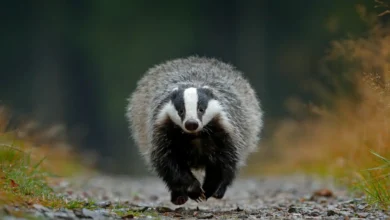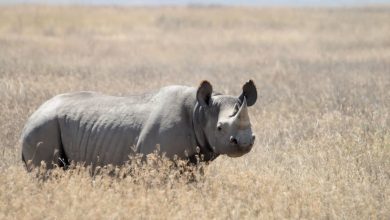Bats are unique creatures that have evolved over millennia to thrive in skies across the world, feeding on insects, fruits and nectar. Their exceptional ability to fly enables bats to efficiently hunt prey while largely avoiding predators on the ground.
However, bats still face threats from a variety of species that have adapted to exploit these aerial mammals as prey. Understanding what eats bats provides crucial insights into how complex food webs sustain delicate balances in ecosystems globally.
Elusive as they may be while in flight, bats must eventually come to rest, creating opportunities for other skilled hunters to capture them. And the nutrients gleaned from ingesting bats circulate back to energize the animals that feed on them.
Examining bat predators reveals the clip at which their populations could grow exponentially in the absence of regulation. It also gives hints into evolutionary adaptations bats have acquired to better avoid attacks, from their nocturnal behaviors to forming protective colonies.
As essential as insect control by bats is to maintaining human food production, so too is the need for bats to serve as prey.
This interdependence stabilizes natural systems that otherwise might fluctuate more chaotically amid unrestrained booms and crashes across populations of species.
[ez-toc]
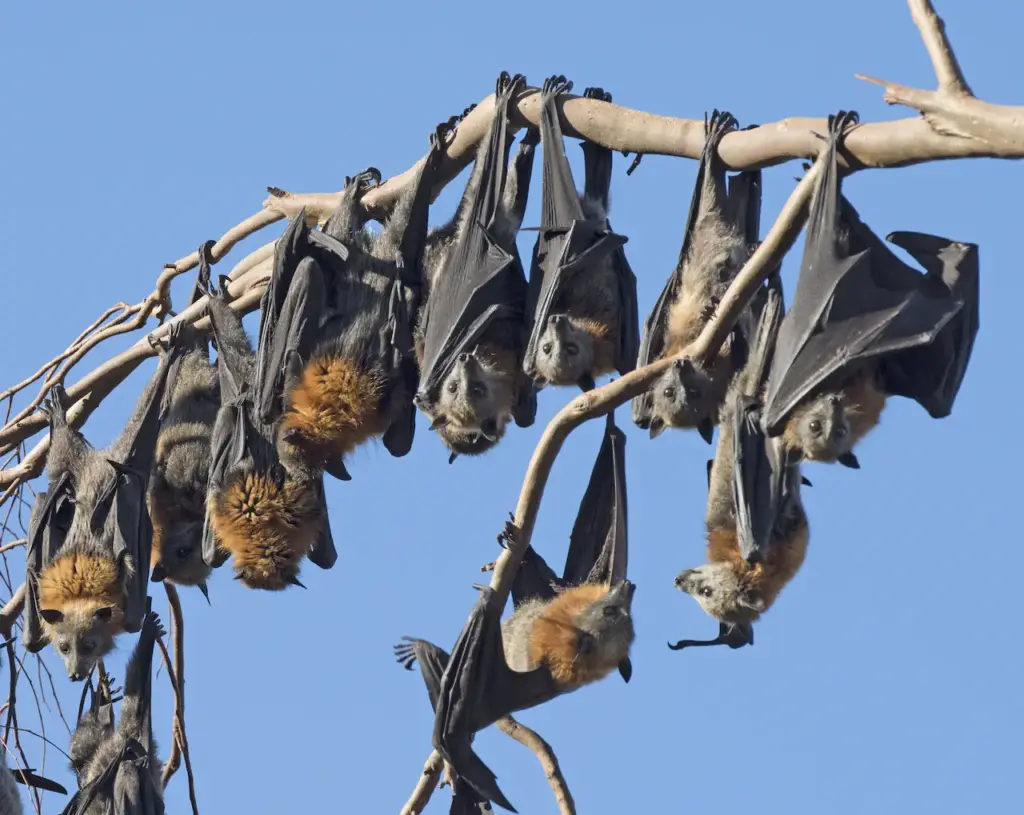
Birds of Prey
Birds of prey, also called raptors, are major predators of bats worldwide. Examples of birds that eat bats include owls, hawks, falcons and eagles. Birds of prey use their exceptional vision and flying abilities to hunt down bats in mid-air or snatch them from their roosts.
Owls are likely the most common birds to prey on bats. Owls are nocturnal hunters just like bats, so they are awake and flying around at night when bats are most active.
Powerful owls like the Great Horned Owl and Eagle Owl can easily kill and ingest bats whole. Smaller owls may target only juvenile bats or tear pieces off to eat if the bat is too large to swallow whole.
While owls rely mostly on their hearing to locate prey in the dark, hawks hunt bats using keen eyesight during daylight hours.
Red-tailed hawks, Northern Goshawks and Swainson’s Hawks are all known to eat bats occasionally. They likely target ones roosting in trees that can be easily picked off.
Peregrine Falcons use their signature aerial hunting abilities to chase down flying bats at high speeds, surprising them mid-flight to catch and kill them. And large eagles like Bald Eagles and Golden Eagles prey on bats around roosts.
Both the burrowing abilities and large size of these eagles allow them to excavate bats from caves and to carry away large individuals to consume.
Overall there are many types of predatory birds with the capabilities to hunt and eat bats all over the world. Their numbers certainly keep bat populations in check so they do not become overabundant.
Snakes
As adaptable reptilian predators, snakes make up another group of animals that eat bats in many regions. Snakes rely on stealth to approach roosting bats and then strike swiftly to inject venom or constrict bats to subdue them.
Various species of snakes have been documented preying regularly on bats, including rat snakes, kingsnakes, racers and vine snakes. Rat snakes in particular specialize in climbing and raiding bat colonies in caves or hollow tree cavities.
They use a combination of striking and constricting to kill and consume multiple bats at once. Kingsnakes also invade bat roosting areas and prey on them using constriction to suffocate bats.
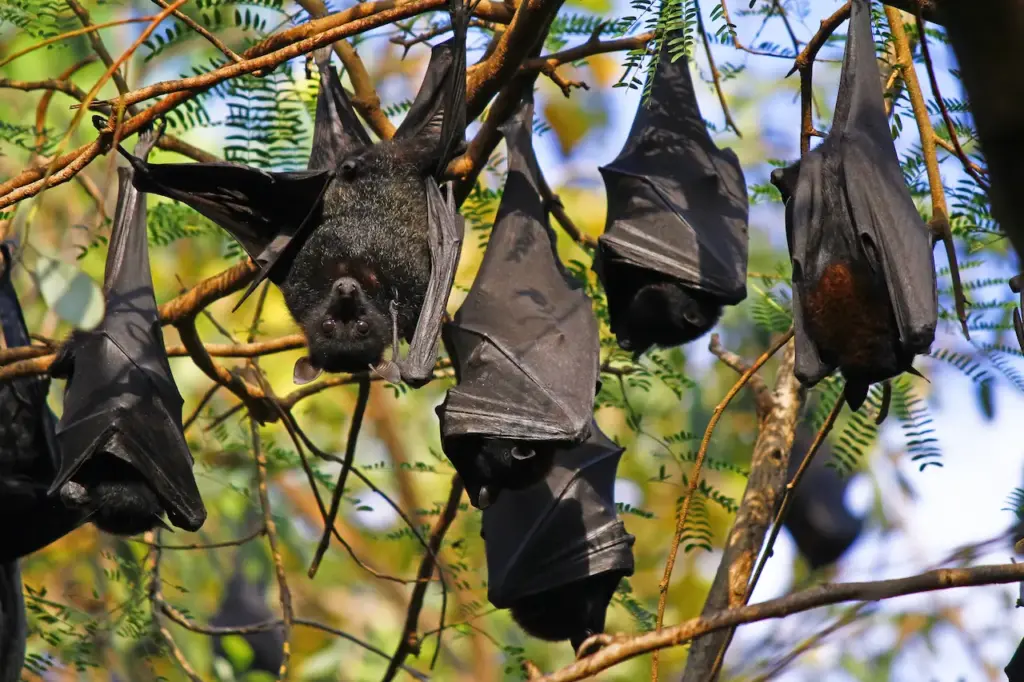
Racers and vine snakes use speed and ambush tactics to attack emerging bats. Racers speedily snatch flying bats right out of the air as they exit roosts at dusk. And vine snakes waiting camouflaged in vegetation outside roosts strike quickly to grab passing bats.
Venomous snakes also occasionally eat bats despite not actively hunting them very often. Copperheads, rattlesnakes and cottonmouths may bite and envenomate unwary bats that pass nearby.
But there is likely low nutrition gained from a tiny bat relative to the large amount of venom expended.
The variety of snakes that prey on bats demonstrates the vulnerabilities bats have to stealthy, climbing predators while roosting in cavities and emerging at night. Bats must remain vigilant to avoid snake ambushes even when in flight.
House Cats
As prolific hunters proximate to human habitations, domestic house cats also sometimes prey on synanthropic bats that utilize buildings and structures to roost in cities.
Much like their wild feline cousins, house cats still retain their predatory instincts to hunt even when fed by their owners. Bats that choose to roost in covered exterior areas of buildings like porches and patios are at the most risk of being caught by house cats.
The cats wait silently outside roosting spots and snatch unsuspecting bats as they come out at night to feed. Even bats hanging from walls or ceilings are not always safe if a nimble cat manages to scale up and swat them down.
Once caught, cats proceed to bite, claw and pounce on bats to kill them outright or immobilize them to take away as captured prey.
However, house cats tend not to consume bats after dispensing with them. Well-fed pet cats mainly hunt them more for sport, perhaps motivated by their movement in flight.
So while house cats do not necessarily eat a large quantity of bats, their keen hunting abilities can exert pressure on local bat populations attempting to roost and feed near areas of human habitation.
Protecting bat colonies that reside near homes relies in part on keeping pet cats well supervised outdoors and preventing access to roost locations bats occupy.
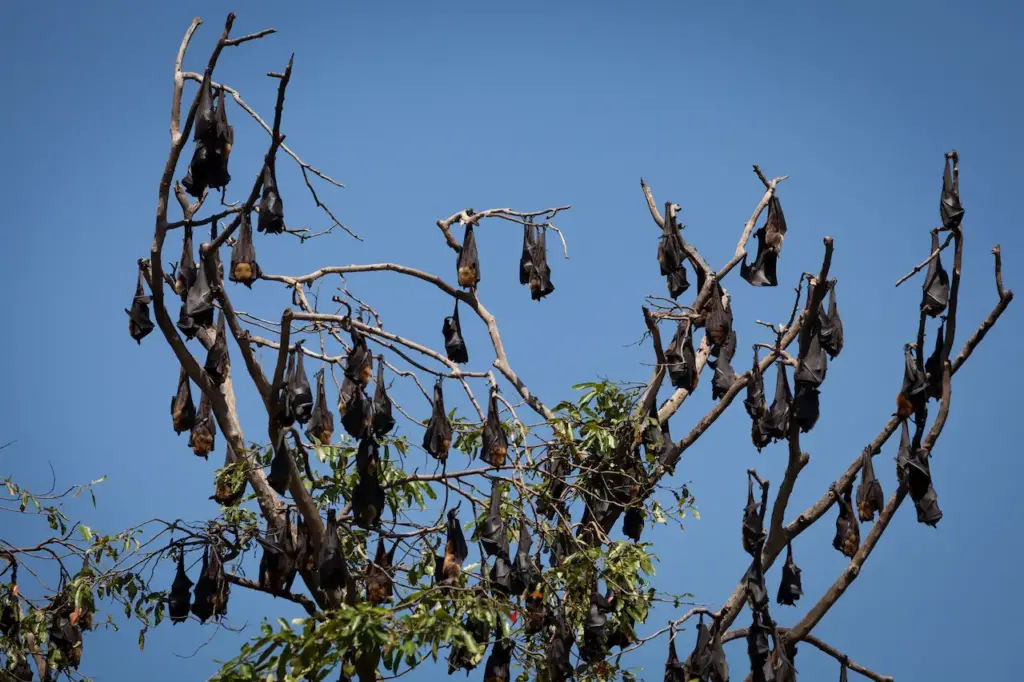
Large Lizards
As predominantly tropical animals, various lizard species also hunt and consume bats as prey. This is especially common on tropical islands where dense bat colonies live alongside huge predatory lizards. Monitor lizards, in particular, are known to feed on island bats.
Monitor lizards like the Komodo dragon have even developed a specific taste for bat meat and organs.
Their lightning-quick mouth strikes, razor-sharp claws, and robust physical strength enable them to scale trees and rock walls to access bat caves and extract full-grown bats with ease to consume.
Reports of remains strewn around monitor lizard feeding grounds confirm that they are significant predators of fruit bats and sheath-tailed bats on islands across Indonesia and the Philippines.
Tegus comprise another group of large omnivorous lizards from Central and South America that opportunistically prey on various bat species. Black and white tegus and common tegus climb adeptly and even dig to breach bat roosts in tree hollows and burrows in search of food.
Once inside, these sizable 3-4 foot lizards feast on both juvenile and adult bats along with eggs and larvae indiscriminately.
So from both islands and mainland ecosystems, lizards demonstrate their capabilities at exploiting colonies of roosting bats for sustenance using their sturdy builds, speed, and agility to overcome bats’ mobility in flight.
Conclusion
Bats have a wide variety of natural predators around the world that keep their populations restricted by passively regulating their numbers in given regions.
Whether hunting in sky-clashes or ambushing grounded roosts, birds of prey, snakes, house cats, and large lizards all consume bats frequently enough to curb overpopulation.
But bats have also evolved under this predatory pressure for ages to develop defence mechanisms against attack while roosting and evasive flight abilities.
This balance maintained between predators and prey contributes to continued ecosystem stability as part of the intricate web of life-sustaining natural habitats globally.
Paying mind to patterns of wildlife-consuming bats gives key insights into the demand driving the dynamics of the food chain at large.

